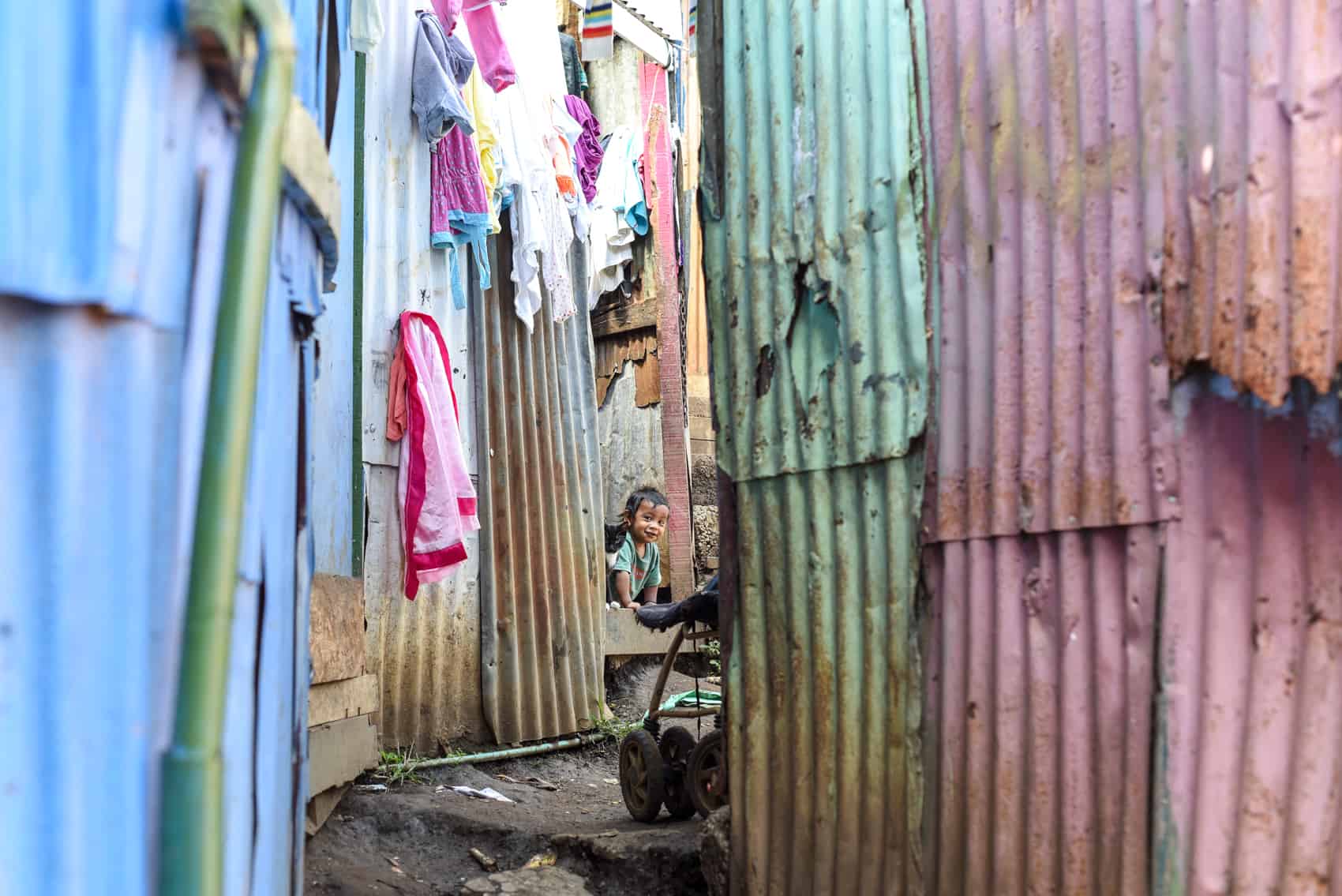Thousands of tourists visit Costa Rica every year and load onto buses to see the country’s famous beaches, volcanoes and rainforests. And on their way, they might pass by Costa Rica’s most unlikely tourist attraction: Triángulo de la Solidaridad, one of the capital’s best known slums.
Now, for $12 visitors can participate in the “Really Experience Community” tour guided by the slum’s residents. Organizers and participating residents hope that the tours will offer visitors and Costa Ricans alike a new perspective on the country’s persistent 20 percent poverty rate and a window into the lives of those who inhabit these neighborhoods on society’s fringes.
The Tico Times tagged along for one of the tours, coordinated by Boy with a Ball Costa Rica, a nonprofit community development organization.
Triángulo de la Solidaridad is an unplanned community of roughly 2,000 people located off Route 32 just north of downtown San José. Founded in 2001 largely by Nicaraguan migrants, Triángulo, as it’s also called, is home to more than 520 families, according to the Housing Ministry.
“Life is hard there, very hard,” said Housing Minister Rosendo Pujol, “it’s not for the weak.”
From the far side of the highway that many residents hazard daily, crossing to and from work, the walls of improvised homes — made of tin, wood and other scrap — are a collage of colors. On a recent weekday, a group of children played football on the highway’s shoulder, their laughter carrying over the roar of tractor-trailers on the highway. Trash, and the ashes of burned trash, littered the grass leading into the slum.
José Matus, a boyfaced 20-year-old student and Triángulo native, was one of the tour guides.
“Costa Rica is a really well visited place and everyone thinks it’s a beautiful country — which it is — but also there’s a poor side to Costa Rica where there is poverty. I like [the tours] because this way I can show the other side of Costa Rica that normally tourists wouldn’t see,” Matus said, winding down the narrow streets.
Many of the paths through the community are no wider than an adult’s outstretched arms. During the tour, propped-open doors framed families ghostly lit by television screens. Kids laughed, neighbors gossiped, and vigorón, a traditional meal of cabbage slaw, yuca and pork rinds, sizzled.
At one point, the path morphed from dirt to mud; wooden pallets laid over puddles and connected to occasional concrete slabs.
“It’s terrible when it rains,” Matus said over his shoulder.
A group of schoolgirls sitting on a ledge feigned bashfulness when the group walked by, sharing a private joke and giggling with each other. One of them was Matus’ niece.
“I want to be an example to my nieces,” he said. “I want to be somebody in life.”
Matus said he couldn’t afford to stay in high school and had dropped out to work in a store in San José. But he has since started up his studies again from home. Biology is the last subject he needs to pass before he can take the entrance exam for university.
José Francisco Arias Pérez, executive director of Boy with a Ball Costa Rica, said he hoped the tours would encourage empathy in visitors.
“There’s a prejudice that these communities are full of lazy people that don’t want to work, and things like that, or that they’re dangerous people,” Arias said. “But what I see is that 95 to 97 percent of the people are good people. The only difference between me and them was that I was born in a different place.”
Boy with a Ball, which receives funding from the U.S. Embassy in San José, met with the community board that governs Triángulo de la Solidaridad and got permission to bring visitors. The organization pays local guides to give the tours, and Arias said all proceeds generated from the tours go back into community projects, including tutoring programs and micro-businesses.
Before and after the tour, Arias led a briefing with the visitors — The Tico Times reporters and a group of Ph. D. students visiting Costa Rica via Universidad de la Paz.
Generally, guests are not allowed to take photographs or video during the tour.
“We have to be careful not to objectify the community,” Arias said.
Matus, the guide, said people in the community have been open to the tours so far.
Angela Birts, a Ph. D. student from San Jose State University in California, was on the tour.
“I felt that everyone was welcome and generally there was a calmness and a peace in this community which you may not be able to pick up just by driving by,” she said.
Birts acknowledged that the tour was not exactly on the zip-lining, sunny beach circuit that most tourists expect when they come to Costa Rica.
“Be open-minded and suspend your judgements about a place and just take it as an opportunity to be present and get to know the people that are in the environment because it’s their community,” Birts said after the tour was over. “I feel privileged that I have the opportunity to be here.”
It’s unclear how much longer Triángulo will be around to host tours. The slum lies right in the path of a major highway expansion project and the Housing Ministry recently started to relocate some families who live in the community.
The process has been riddled with delays, environmental petitions and not-in-my-backyard opposition, but Housing Minister Pujol said hundreds of publicly-funded homes would be made available in the coming months.
Matus, the tour guide, said people in Triángulo live with dignity, despite their poverty. He takes his university entrance exam in August.
___
Those interested in attending a tour of the Triángulo de la Solidaridad slum can contact Boy with a Ball Micro Business Manager Kim Hackbarth at kim.hackbarth@boywithaball.com.








